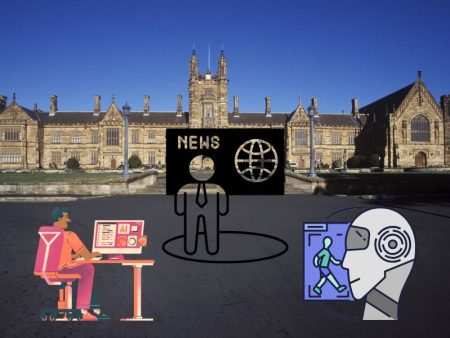So, here’s a little confession: I once broke up with someone over a voicemail.
Not because of what they said. But how they said it.
Flat tone. Rushed delivery. No pause after “I care about you.” It felt like reading a shopping list—emotionally void and about as comforting as cold toast. And I realized in that moment: words are just… the surface. The real message? That’s hiding in tone and pacing.
Let’s talk about that.
You Know That Feeling When…
You call a friend, and before they even say “I’m fine,” you know they’re not?
Yeah, that.
It’s wild how much information we pick up from someone’s voice—without listening to the actual words. A sigh before speaking. The slight tremble in a laugh. The weirdly long pause before a “sure.”
That’s voice psychology in action. And it affects everything—relationships, business, education, storytelling, and especially how we experience AI-generated voices.
But before we jump into tech, let’s break down why our brains are wired to care about tone and pacing.
Our Brains Are Listening Between the Lines
Human communication is a multi-layered thing. Words carry data. But tone and timing? They carry emotion, urgency, confidence, even intent.
Researchers at UCLA famously broke it down like this:
- Words – 7% of communication
- Tone of voice – 38%
- Body language – 55%
Now, sure, those numbers aren’t gospel. But they say something important: your tone speaks louder than your vocabulary ever could.
Ever been told “I’m not mad” in a voice that screamed otherwise?
Exactly.
The Power of the Pause
Can we talk about pacing for a sec?
Because how fast or slow someone speaks can dramatically change how we interpret their message. Take a deep breath and try this out:
“I forgive you.”
vs
“I… forgive you.”
The same three words. Completely different emotional weight.
When someone pauses before a hard truth, or lets their voice soften before the word “sorry,” we feel it. The silence between words is just as powerful as the words themselves.
It’s not filler. It’s emphasis. It’s where the emotion lives.
Now Enter AI Voices—The Good, The Weird, and the Promising
Here’s where it gets interesting.
AI-generated voices are now being used everywhere—narrating articles, reading audiobooks, leading meditations, even whispering bedtime stories.
But the biggest hurdle?
Getting the tone right.
Because robotic, one-speed, monotone delivery? That’s a vibe killer. It’s the quickest way to lose trust, attention, or emotional connection. That’s why new tools like AI Voice Text To Speech Unlimited Characters are such a big deal—they’re pushing the boundaries of what synthetic speech feels like.
We’re not just asking AI to talk anymore. We’re asking it to communicate.
Let Me Paint You a Scene
Picture this:
You’re on your evening walk. Sun’s setting. You’ve had a tough day. You pop in your earbuds and hit play on an article-turned-audio about recovering from burnout.
The voice is calm. It doesn’t rush. It breathes between sentences. When it says, “It’s okay to feel tired,” it says it like it means it. And suddenly, you’re walking a little slower. Breathing a little deeper.
That voice didn’t just read. It held space for you.
That’s the kind of emotional depth we’re now getting glimpses of with today’s AI voice tech.
Why Pacing and Tone Matter Even More with AI
With humans, we intuitively know what someone means, even when they mess up the wording. But with AI? The stakes are different.
If a synthetic voice delivers an urgent message with the tone of a bored barista, we don’t just lose clarity—we lose trust.
And the funny thing is… we know the voice isn’t real. But we still react emotionally when it gets it wrong—or right.
It’s kind of like watching a movie. You know it’s scripted, but you still cry when the dog dies. Why? Because the pacing, the tone, the music—they align with your emotional expectations.
Same thing happens when an AI voice slows down during a tragic part of a story. Your brain doesn’t say, “That’s fake.” It says, “Oof. That hit.”
The Empathy Illusion—and Why It Works
AI doesn’t have feelings.
Let’s get that out of the way. It’s not empathizing with you. It’s mimicking patterns of speech that humans use when they empathize.
But weirdly… that’s often enough.
When a voice slows down to say, “You’re not alone,” it doesn’t matter if the voice is synthetic. What matters is that you heard it.
And there’s something beautiful about that. About tech giving people access to moments of emotional validation they might not otherwise get.
Especially when you don’t need an account or login—just something simple and accessible, like AI Voice Maker No Sign Up, to make it happen.
Not Just a Voice—A Mood
Tone and pacing don’t just deliver words. They set the emotional temperature of a conversation.
- Slow and low = comfort
- Fast and choppy = urgency or anxiety
- Rising tone = curiosity or doubt
- Falling tone = finality or sadness
Once you learn to hear these cues, you realize they’re everywhere. They’re why we trust some speakers and tune out others. Why some YouTube narrators feel like friends, and others like background noise.
And it’s why synthetic voices are getting smarter. Because if they don’t adapt emotionally, they won’t be able to compete in a world where attention spans are scarce and trust is everything.
Let’s Get Personal (Because Why Not)
I once heard an AI voice read a breakup letter in a short film. It wasn’t perfect. The timing was slightly off. But the pacing? Surprisingly moving. It lingered on the word “goodbye” just long enough to hit me in the chest.
I didn’t expect to feel anything. But I did.
And honestly, that messed with me a bit.
Because if a non-human voice can deliver a human emotion—even once—it changes what we think voices are for.
So What Do We Do With All This?
Well, if you’re a creator, a teacher, a podcaster, or even someone writing heartfelt emails—you need to start paying attention to not just what you say, but how it sounds.
Whether you’re speaking, writing, or using AI to deliver your message, think about:
- Pacing: Are you rushing through your point or giving it room to land?
- Tone: Does your delivery match your message’s emotional tone?
- Pauses: Are you letting important moments breathe?
Because words matter. But tone and pacing? That’s where the magic is.
Final Thoughts: Speak Like You Feel Something
At the end of the day, we all want to feel seen and heard. Sometimes that happens in a conversation. Sometimes through a podcast. And sometimes… through a voice that isn’t even human.
And that’s okay.
If that voice gets the pacing right. If it softens when it should. If it makes you feel like someone’s listening even when no one is around—that’s a win.
So whether you’re recording a voice memo, reading a bedtime story, or using AI to narrate your blog post, remember this:
It’s not just about the words.
It’s about how they land. How they sound. How they feel.
And if you can get that part right—everything else will follow.
Have you ever been unexpectedly moved by a voice—real or artificial? Drop your story below. Let’s get into the weird, wonderful psychology of sound.


